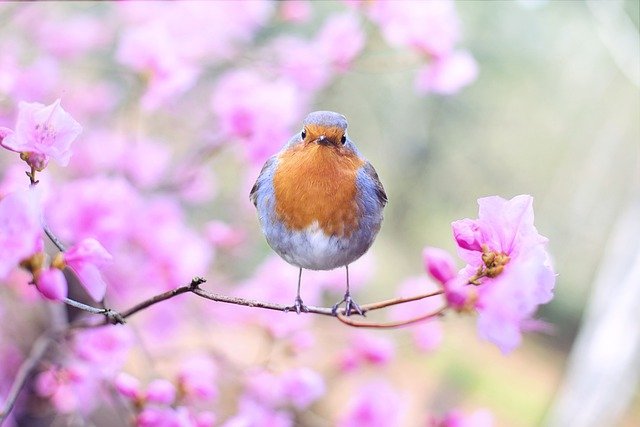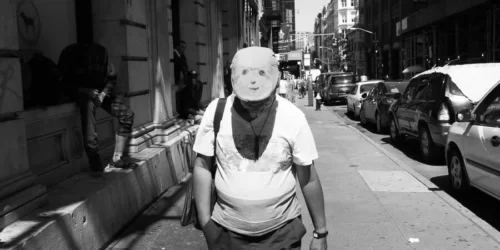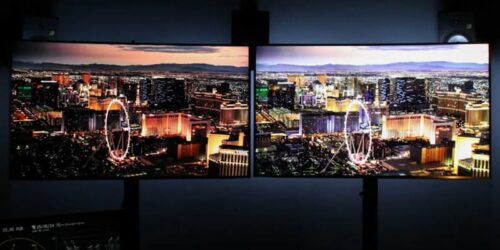What Is Texture In Photography? All You Want To know
There are many tools in a photographer’s “emotional toolbox” – the things you can do in photography to shift a photo’s emotional message in your preferred direction. Today, I’ll focus on one of them: texture.
What is texture in photography?
Texture in photography: Texture is what a photograph would feel like in three dimensions if you reached out, closed your eyes, and touched it. It may feel granular and smooth to touch sand. Water can be either glassy and smooth or rough and pointy.
For more information, continue reading.
Table of Contents
What Is Texture In Photography?
All types of photographers are familiar with the term texture. But for some people, its meaning might be a little unclear.
Textures are essentially small visual details that convey the physical sensations of an object. A surface’s texture can be anything your hand feels when it comes in contact with it, including smooth and rough.
They are capable of being captured both up close (for instance. a wall covered in graffiti) or up close (e.g. the details on a leaf).
In photography, textures are defined by depth, strong contrast, and patterns. And an editing program or post-processing can intensify these.
How To Photograph Textures – Settings And Camera Tips
Your camera will capture more details the higher your f-number. Your images will have more blur and bokeh the smaller your f-number is.
Your aperture should be at least f/6 because pictures of various textures typically have a lot of fine detail and sharpness.
Low f-numbers are preferred by some when photographing objects with different textures. In photography of textures, this is also acceptable.
Because of this, you can capture textures with almost any lens.
Your hands will tremble a little when you press the shutter, no matter how calm you are. These small adjustments don’t really matter in other types of photography.
But when it comes to texture photography, they decide whether a picture is good or bad. When photographing textures, use a tripod to lessen camera shake. Unless your goal is to take blurry pictures.
Use a timer if you want your pictures to be crystal clear. This will make sure that nothing—not even tiny hand movements—will have an impact on how sharp your texture shot is.
You can use a remote to take pictures if, for any reason, you’d prefer not to be right next to your camera.
These are typical in self-portrait photography. But these are useful to other kinds of photographers as well. This tiny gadget has two uses: it can be used to time something or to assist with distant photography.
Find Beautiful Texture Photography
The fact that textures are virtually ubiquitous is one of their best qualities. You’ll find more opportunities for creativity the more details you keep an eye out for.
Go for a walk in the park rather than using your busy social media apps. List the textures that stand out to you in your mind. This can include anything from rough surfaces like brick walls or tree bark to less startling ones like peeling paint.
Use the camera on your smartphone instead of hauling around a heavy camera while out for a stroll. Record the ideal locations for a future photo shoot.
You can also search for textures inside your house. There are patterns and contrasts in even the most plain-looking space. These might end up being the focal points of your upcoming image.
Beautiful indoor texture photography includes images of desks, wallpaper, and bedclothes, to name a few. Great textures can also be found on city streets, in libraries, thrift shops, and beaches. See more about What Is Street Photography?
Make Your Own Textures
You can create your own textures using anything you can think of. Create something artistic. You can use anything to make eye-catching textures for photography projects; it doesn’t have to be a masterpiece.
Even an awkward sculpture has textures that could be stunning in a close-up photograph.
To create your own textures, you can:
- make an abstract painting;
- collect and organize natural objects like pebbles, leaves, or dried flowers;
- photograph things like flour, feathers, and water in motion.
Use Light To Add Depth To Your Textures
The incorrect lighting will make even the most lovely textures appear unflattering.
Midday light or other direct light may make your photo too contrasty. And taking a sharp picture might be challenging in the soft evening light. Your images will have a significant increase in grain.
Between these two extremes, you can find the most attractive light.
As the day wears on, textures appear differently. Because of this, working with ambient or natural light can be both unpredictable and enjoyable.
This lack of predictability could be upsetting at times. specifically if you are trying to capture a certain atmosphere.
Work with artificial light when necessary in these situations. With the help of a light source and a basic backdrop—even a large sheet of paper will do—you can make your own studio.
You have more control when you directly light your subjects. So, you’ll have more time to play around with angles, contrast, and brightness.
You can use a lamp or a torch with a basic light diffuser if you don’t have access to professional lighting equipment.
Use Texture In Photography Portraits
Textures can be used in portrait photography to give a face more depth, vibrancy, and contrast. Hair, lines, and freckles are examples of human textures.
As you would with natural textures, treat human textures with respect. Take pictures of them from a distance, up close, and in detail. Your photographs will appear more striking the more detailed they are.
Textures can also be used to improve a portrait background. Even if you’ve blurred a pattern because of depth of field, it can add much-needed contrast to a straightforward portrait.
Be mindful of complementary colors when choosing backgrounds for your portraits. Too many or vibrant textures will make your subject appear more prominent than it is. or even ruin your composition.
In my opinion, plain colors, wrinkly surfaces, and pastels best accentuate portraits.

Create Stunning Double Exposures Using Simple Textures
Double exposures are created by merging at least two images. Usually, one of these images is a silhouette. The other is a landscape, portrait, or texture that uses the silhouette to convey a narrative.
Some of the most beautiful double exposures have stunning textures. The main image stands out because of these.
I take a few minutes to capture textures and landscapes during every photo shoot. These can be helpful for future double exposure projects. Then I place them in a unique resource folder.
Even though the pictures you amass right now might not seem useful, you never know when you might need them. I occasionally use textures I took pictures of many years ago to create double exposures!
Texture As Subject
Sometimes, texture isn’t just a minor aspect of the image; it’s the image’s main theme. These photos, which are frequently abstract or semi-abstract, can be very effective.
NIKON D7500 + 300mm f/4 @ 300mm, ISO 3200, 1/400, f/4.0
The reason why “texture as subject” photos tend to work well is that they tell a unified story. You’ll end up taking a photo where every aspect of the frame is on the same page, so to speak, as long as nothing distracting interferes with the texture.
A large portion of the problem with most photos is that they don’t have a unified message, where as much of the image as possible contributes to the image. (With the majority of the photos I take but never share with anyone, it’s undoubtedly the biggest issue.) Photos with a texture bypass that to some extent. Many of the emotions in a photo will almost certainly be unified if the entire image has a single texture.
This does not ensure an image that is suitable for a portfolio. Even so, if you want a good photo, the texture must be interesting. The likelihood that a chance photograph of your kitchen floor will win is not very high. As always, the quality of the image is greatly influenced by elements like light and composition. But “texture as subject” is still one of the easier ways to take a unified photo, and that can be a very good starting point.
Texture As An Element Of Composition
The majority of the time, texture won’t play the main character or be the focus of the entire picture. In a portrait photograph, for instance, it’s more likely that people will focus on the subject’s eyes than on the quality of their skin or hair.
But even when texture isn’t the primary inspiration for a photograph, it still affects how we feel about it. Perhaps the mountain on the horizon is the main subject of your picture, and it won’t change no matter what you do to the rest of it. A flowing meadow in the foreground, as opposed to cratered rocks and patches of dirt, still conveys very different emotions.
The background that is out of focus is one aspect of my photos that I always pay attention to. The out-of-focus portions of many photographs often occupy a sizable portion of the image and have a strong emotional impact. Take a look at the image below:
The background’s rough and clashing highlights and shadows here detract from the emotional message. Actually, the background draws so much attention on its own that it detracts from the subject.
In order to get a background with a less distracting texture, I followed the dragonfly for a while as it landed on various plants. I was happy to see it land here soon after, for what I consider a better photo:
Both images share the same subject matter. Additionally, the composition is identical but mirror imaged. However, the second image works better because the softer background texture fits better and doesn’t draw attention away from the dragonfly.
(Altering your aperture is another way to change the background texture, though in this instance, I’m reasonably certain that I used the same aperture both times. Aside from noting the similar amount of the dragonfly that is in focus on both occasions, I am unsure because it was a non-CPU lens.)
Make The Most Of Texture
You shouldn’t spend an eternity obsessing over texture. It is merely another tool at your disposal when writing. But it is something that you have some control over in most photos, even non-studio scenes. The texture of a picture can almost always be changed in one way or another.
For instance, you might make slight or significant changes to your composition. Here’s an example where I think the harsh foreground texture of the seashore, though not awful, contradicts the rest of my photo somewhat:
I’m not saying one is better than the other, just that looking for a variety of subjects can yield remarkably different outcomes. This is related to the recent article I wrote about timing and perspective in landscape photography. You may end up capturing radically different textures — and, consequently, radically different emotions — depending on the time of day and the direction you are facing when you are taking pictures.
You may have noticed that the majority of the topics I’ve covered so far have to do with taking photographs in the field with natural lighting. However, you have almost limitless control over the texture present in your entire image when taking pictures in a studio.
You can still somewhat control texture in post-processing even if you don’t have the luxury of shooting in a studio.
However, it’s simple to go too far. Particularly when working with particularly harsh sliders like Lightroom’s clarity option, maximum or minimum slider settings are typically not a good idea. It’s easy to see a texture you like, but then take things way too far:
The sliders for texture and clarity in Lightroom are overused.
Although everyone’s tastes will vary, in my opinion, the image above crosses the line from a photo to digital art, and not in a way that I’m happy with. So be careful not to go overboard if you start emphasizing or de-emphasizing certain textures in post.
Last but not least, your camera settings—not just the depth of field that I just discussed—can affect the texture of your image. Here’s an illustration of how I highlighted the gentle character of the ocean wave by using a purposefully slow shutter speed of 1/10 second while shooting handheld.
When you think outside the box, you can find numerous instances that are similar. In order to get the textures you want in your photographs, you can use long exposures, filters, flash, and sometimes even a combination of long exposures, filters, and flash.
A fun hobby is capturing texture in photographs. It will improve your photo manipulations, gallery, and attention to detail.
I adore this genre’s ability to stimulate the senses. You’ll discover more beauty wherever you go the more textures you photograph. You’ll find more opportunities for pictures the more you explore.
Natural Textures: What Are They?
It’s a good idea to make the distinction between natural and artificial textures before considering how to improve your texture photography.
When we discuss natural textures, we mean textures in their natural state. Consider the raindrops on a leaf as an example of a natural texture. The fur of an animal is another example.
The ridges of a valley or canyon and wrinkles on someone’s face are two additional instances of natural textures in photography.
How Do Man-made Textures Work?
While there are textures found in nature that you can use in your photography (more on that in a moment), you can also create your own to add uniqueness to an image. Throwing bright powder, which might evoke images of a carnival or mayhem, is one way you could accomplish this.
Additionally, you can add your own textures by crumpling up some paper, painting on canvas, or, if you have some free time, knitting a blanket or sweater.
Common Texture Photography Mistakes To Avoid
Okay, so you now have a better understanding of texture photography and the various ways you can use it to enhance the visual appeal of your photos. Although the learning curve is frequently steep, many amateur photographers commit the same errors.
Here are a few texture photography blunders you should try to avoid.
Taking Unsteady Images
Without a tripod, is it possible to take photos with excellent texture? Of course, but if you do, you must make sure that your motion is minimal.
Make sure your shutter speed is high enough to prevent blurry images if you don’t have or don’t want to use a tripod.
Maintain your own steadiness as well; try to hold your camera as close to your body as you can, and check to see that your body isn’t swaying. Dress warmly if you’re taking photos outside in a chilly environment to prevent shivering.
Laying your camera down on solid objects is another wise move. Benches, containers, and the ground are a few examples.
Overdoing Things When Editing
It’s a rite of passage for many photographers to go through the stage of post-production where good photos are transformed into ones that appear to have been taken in a microwave. This is also true of texture photography.
If you move the Texture and Clarity sliders too far, your photo may not turn out the way you had hoped. RELATED: How To Improve Your Lightroom Editing Skills: A Few Simple Ways Use the sliders sparingly; pay more attention to the aspects of your photographs that you can influence while you are shooting.
Not Thinking About The Story
Taking a photo with “popping” textures will not guarantee that you’ve got a good picture on its own. As with all photography, you need to consider the narrative you want to convey.
Spend some time sitting down and brainstorming your message before heading outside to take photos. Consider moods, messaging, and other factors. You’ll notice that the quality of your photos is much better if you spend a little more time planning out your shoot.
Conclusion
If you’ve found yourself asking: “What does photographic texture mean?”, this article should have answered that question. Incorporating textures into your images requires you to take a number of factors into account, from the storyline to the camera settings.
Getting your textures just right will take some time, just like with all other photographic techniques. But you’ll get much better with enough practice and a readiness to change.
I appreciate you reading.





